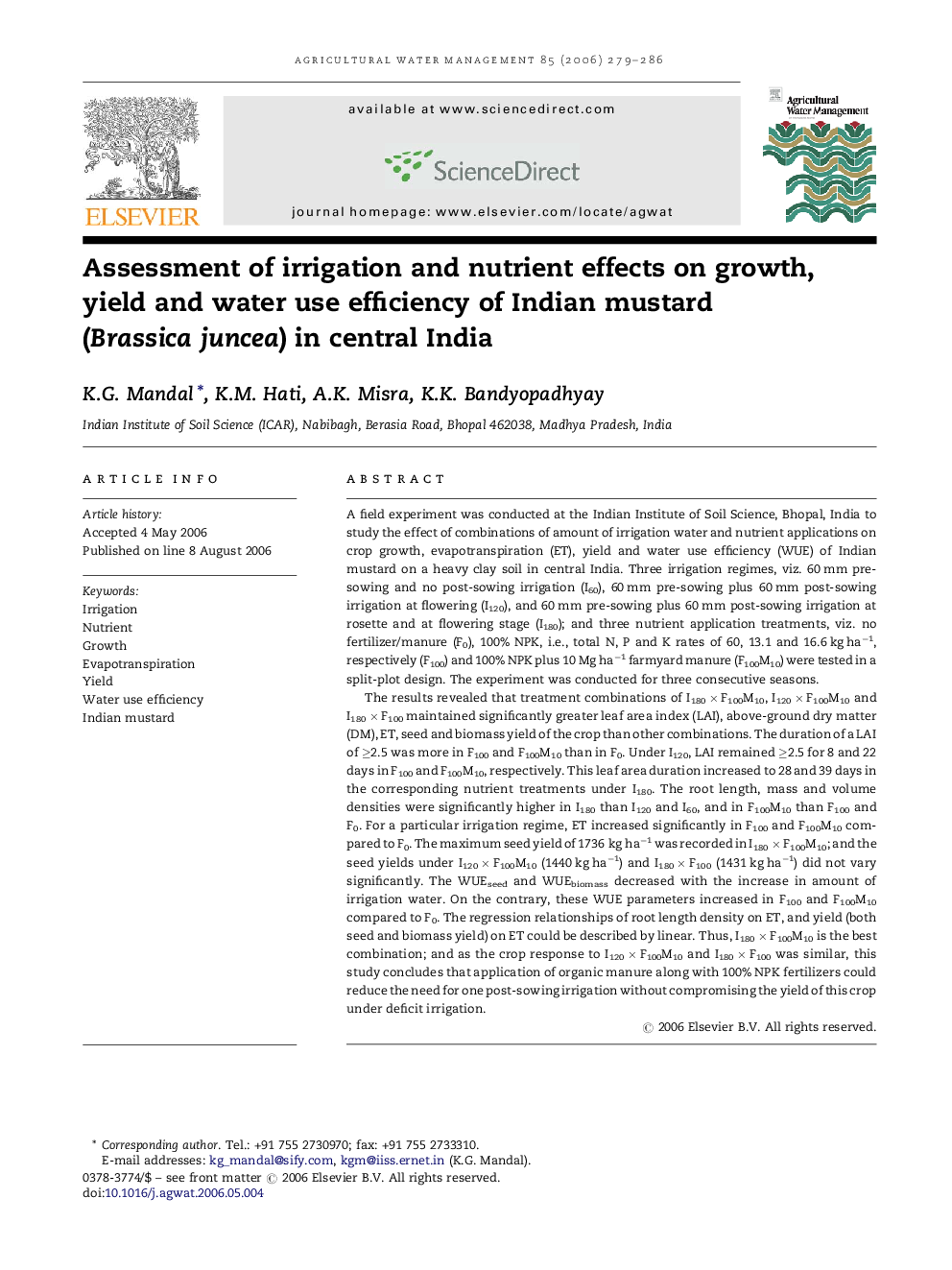| کد مقاله | کد نشریه | سال انتشار | مقاله انگلیسی | نسخه تمام متن |
|---|---|---|---|---|
| 4480529 | 1316500 | 2006 | 8 صفحه PDF | دانلود رایگان |

A field experiment was conducted at the Indian Institute of Soil Science, Bhopal, India to study the effect of combinations of amount of irrigation water and nutrient applications on crop growth, evapotranspiration (ET), yield and water use efficiency (WUE) of Indian mustard on a heavy clay soil in central India. Three irrigation regimes, viz. 60 mm pre-sowing and no post-sowing irrigation (I60), 60 mm pre-sowing plus 60 mm post-sowing irrigation at flowering (I120), and 60 mm pre-sowing plus 60 mm post-sowing irrigation at rosette and at flowering stage (I180); and three nutrient application treatments, viz. no fertilizer/manure (F0), 100% NPK, i.e., total N, P and K rates of 60, 13.1 and 16.6 kg ha−1, respectively (F100) and 100% NPK plus 10 Mg ha−1 farmyard manure (F100M10) were tested in a split-plot design. The experiment was conducted for three consecutive seasons.The results revealed that treatment combinations of I180 × F100M10, I120 × F100M10 and I180 × F100 maintained significantly greater leaf area index (LAI), above-ground dry matter (DM), ET, seed and biomass yield of the crop than other combinations. The duration of a LAI of ≥2.5 was more in F100 and F100M10 than in F0. Under I120, LAI remained ≥2.5 for 8 and 22 days in F100 and F100M10, respectively. This leaf area duration increased to 28 and 39 days in the corresponding nutrient treatments under I180. The root length, mass and volume densities were significantly higher in I180 than I120 and I60, and in F100M10 than F100 and F0. For a particular irrigation regime, ET increased significantly in F100 and F100M10 compared to F0. The maximum seed yield of 1736 kg ha−1 was recorded in I180 × F100M10; and the seed yields under I120 × F100M10 (1440 kg ha−1) and I180 × F100 (1431 kg ha−1) did not vary significantly. The WUEseed and WUEbiomass decreased with the increase in amount of irrigation water. On the contrary, these WUE parameters increased in F100 and F100M10 compared to F0. The regression relationships of root length density on ET, and yield (both seed and biomass yield) on ET could be described by linear. Thus, I180 × F100M10 is the best combination; and as the crop response to I120 × F100M10 and I180 × F100 was similar, this study concludes that application of organic manure along with 100% NPK fertilizers could reduce the need for one post-sowing irrigation without compromising the yield of this crop under deficit irrigation.
Journal: Agricultural Water Management - Volume 85, Issue 3, 16 October 2006, Pages 279–286